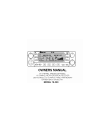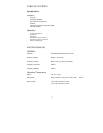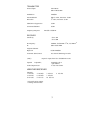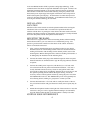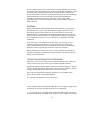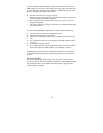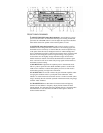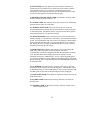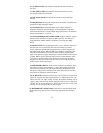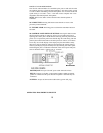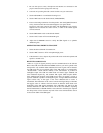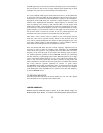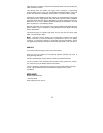5
Use of a mobile receiver at low signal levels is normally limited by the presence
of electrical noise. The primary source of noise in automobile installations is from
the vehicle itself. If the CB operates quietly with the car motor turned off it’s
most likely that the car electrical system is generating noise. In some installations
ignition interference may be high enough to make good communications
impossible. The electrical noise may come from several sources. Many
possibilities exist and variations between vehicles require different solutions to
reduce the noise.
ANTENNA
Mobile whip antennas utilize the metal body of the vehicle as a ground plane.
When mounted at a corner of the vehicle they are slightly directional, in the
direction of the body of the vehicle. For all pratical purposes, however, the
radiation pattern is nondirectional. The slight directional characteristic will be
observed only at extreme distances. A standard antenna connector (type SO 239)
is provided on the transceiver for easy connection to a standard PL 259 cable
termination.
If the transceiver is not mounted on a metal surface, it is necessary to run a
separate ground wire from the unit to a good metal electrical ground in the
vehicle. When installed in a boat, the transceiver will not operate at maximum
efficiently without a ground plate, unless the vessel has a steel hull.
Before installing the transceiver in a boat, consult your dealer for information
regarding an adequate grounding system and prevention of electrolysis between
fittings in the hull and water
.
TUNING THE ANTENNA FOR OPTIMUM SWR
Since there is such a wide variety of base and mobile antennas, this section will
strictly concern itself to the various types of mobile adjustable antennas.
Because the antenna length is directly related to the channel frequency, it must be
tuned to resonate optimally all 40 channels of the transceiver. Channel 1 requires
a longer antenna than Channel 40 because it is lower in frequency.
Due to the various methods of adjusting antennas for proper SWR we have
chosen what we think is the optimum method:
A. Antennas with adjustment screws (set screws).
1.Start with the antenna extended and tighten the set screw lightly enough so that
the antenna can be easily shortened by hand for easy adjustment.
2. Set your transceiver to Channel 20. Press the PTT (push-to-talk) switch, and
move the antenna down. The SWR meter will show a lower reading each time the



